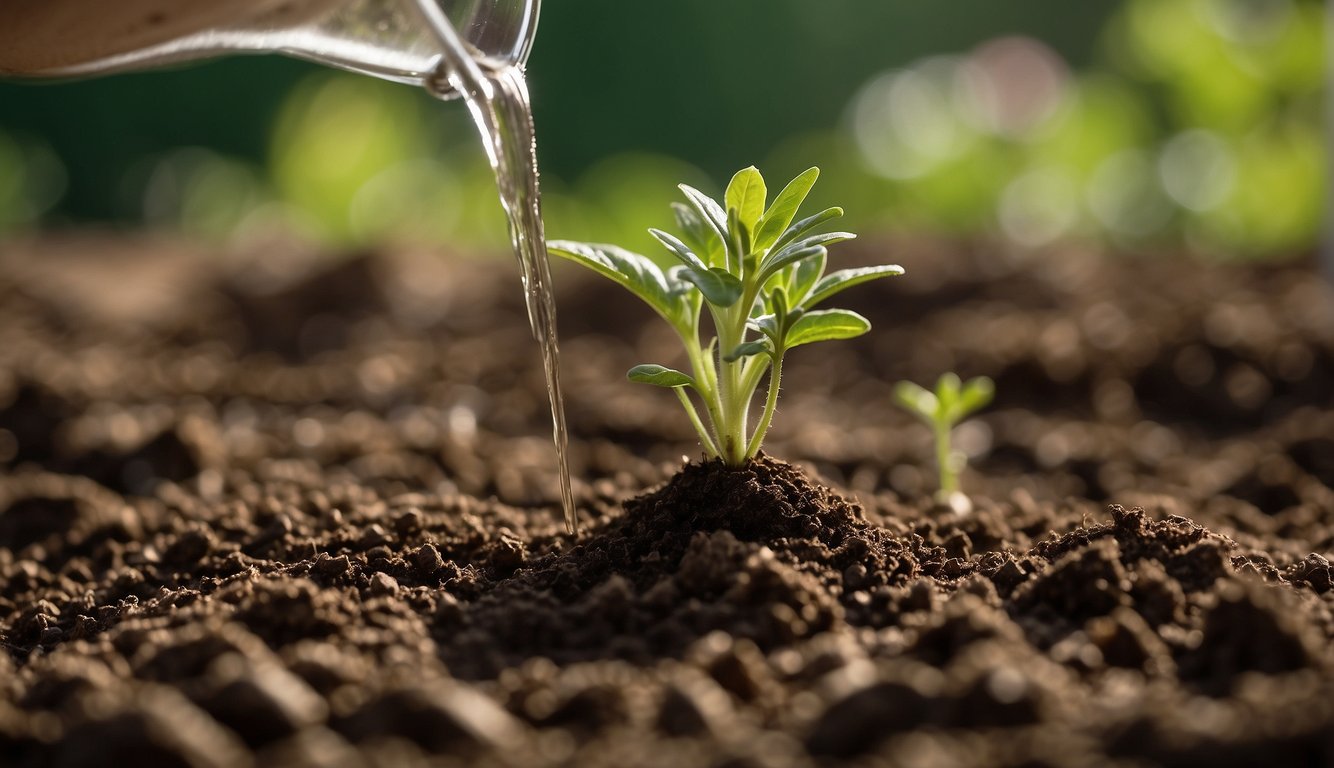TheHerbProf.com is a treasure trove of knowledge for those interested in natural healing and herbal remedies. The website is run by Paul Johnston MD. A naturopathic who has not only received extensive education in the field but also has personal experience in self-healing.
How to grow carrots in a container? Growing carrots in containers is an excellent way to grow fresh and delicious carrots even if you don’t have a big garden. Container gardening is perfect for small spaces, balconies, and patios, and it’s an easy way to get started with gardening.
Carrots are a great vegetable to grow in containers because they don’t require a lot of space, and they grow well in most types of soil.
To grow carrots in a container, you will need a few basic supplies.
You will need a container that is at least 12 inches deep and wide enough to accommodate several carrot plants.
You will also need good quality potting soil, carrot seeds, and a watering can.
Once you have all your supplies, you can get started with planting your carrots.
In this article, I will share with you some tips and tricks on how to grow carrots in a container successfully.
I will cover everything from choosing the right container and soil to planting and caring for your carrot plants.
Whether you’re a seasoned gardener or a beginner, this guide will help you grow delicious and healthy carrots in a container.
Choosing the Right Containers – How to Grow Carrots in a Container?
If you want to grow carrots in containers, it’s crucial to choose the right containers. Here are some things to consider when selecting containers for your carrot plants:
Container Size and Depth
Carrots have long taproots that require a deep container to grow properly.
A container that is at least 12 inches deep is recommended to ensure that the roots have enough space to grow straight and deep.
In addition to depth, the container should also be wide enough to accommodate multiple carrot plants.
A good rule of thumb is to use a container that is at least 12 inches in diameter for every four to five carrot plants.
Importance of Drainage
Carrots require well-draining soil to grow properly. If the soil in the container becomes waterlogged, the roots can rot, and the plant can die.
Therefore, it’s essential to select a container with drainage holes at the bottom to allow excess water to drain out.
If the container you want to use doesn’t have drainage holes, you can drill some yourself using a drill bit.
When selecting containers for your carrot plants, you have several options to choose from.
You can use pots, planters, or even repurpose old containers such as buckets or barrels.
Whatever container you choose, make sure it meets the depth and drainage requirements for growing carrots in containers.
Selecting Soil and Fertilizer – How to Grow Carrots in a Container?
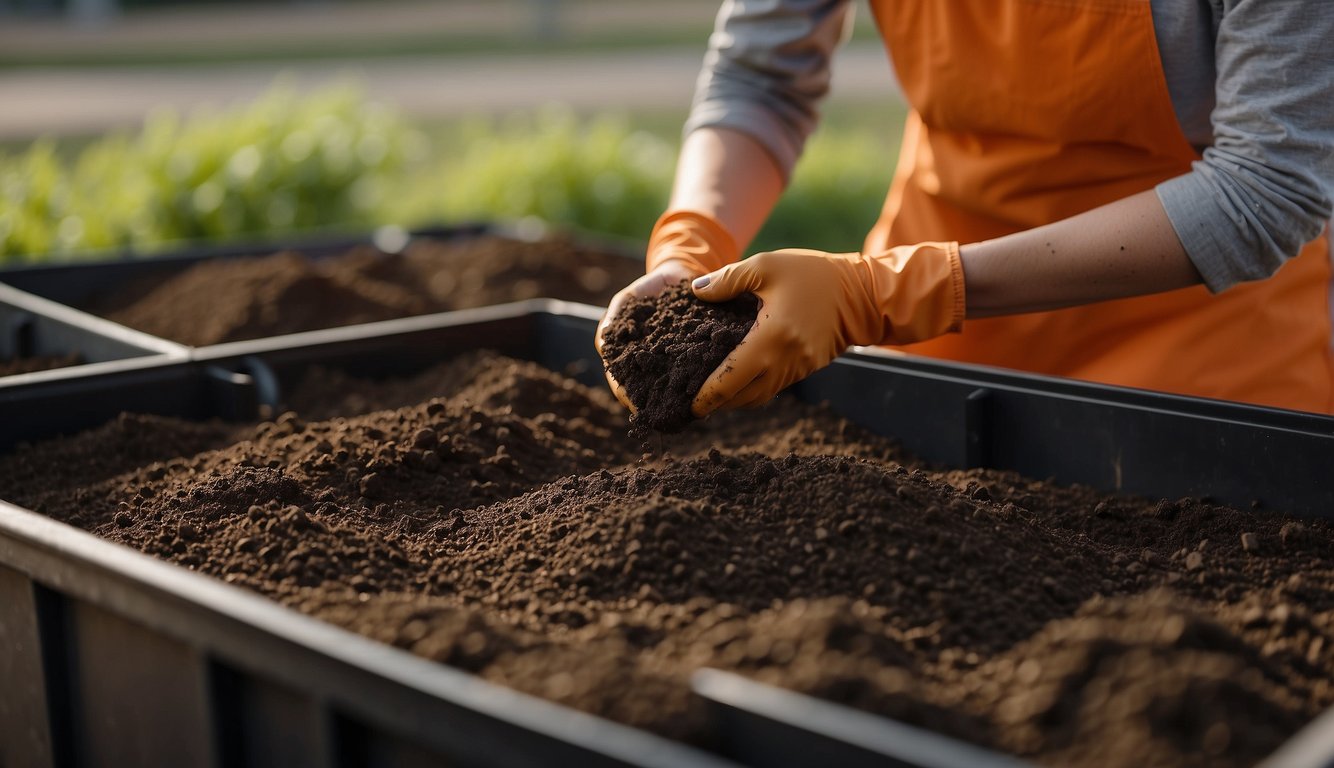
When it comes to growing carrots in a container, selecting the right soil and fertilizer is crucial. Here are some important factors to consider.
Soil Composition for Carrots
Carrots prefer loose, well-draining soil that is free of rocks, clumps, and other debris that could impede root growth.
A soil composition that is high in sand and low in clay is ideal.
You can purchase a potting mix that is specifically designed for container gardening, or you can make your own by mixing equal parts of compost, peat moss, and sand.
It’s also important to ensure that the soil is rich in organic matter.
Organic matter helps to improve soil structure, promotes healthy root growth, and enhances nutrient uptake.
You can add compost, well-rotted manure, or bone meal to the soil to increase its organic matter content.
Fertilizer and Nutrient Requirements
Carrots have specific nutrient requirements that must be met in order for them to grow properly.
They require a balanced fertilizer that is high in phosphorus and potassium, but low in nitrogen. Nitrogen promotes leafy growth, which is not desirable when growing carrots.
Before planting your carrot seeds, it’s a good idea to mix a slow-release fertilizer into the soil.
This will provide a steady supply of nutrients to the plants throughout the growing season.
You can also add a liquid fertilizer every 3 to 4 weeks to promote healthy growth.
It’s important to avoid over-fertilizing your carrot plants, as this can lead to stunted growth and poor root development.
Always follow the instructions on the fertilizer package and use it sparingly.
Carrot Varieties and Seed Selection – How to Grow Carrots in a Container?
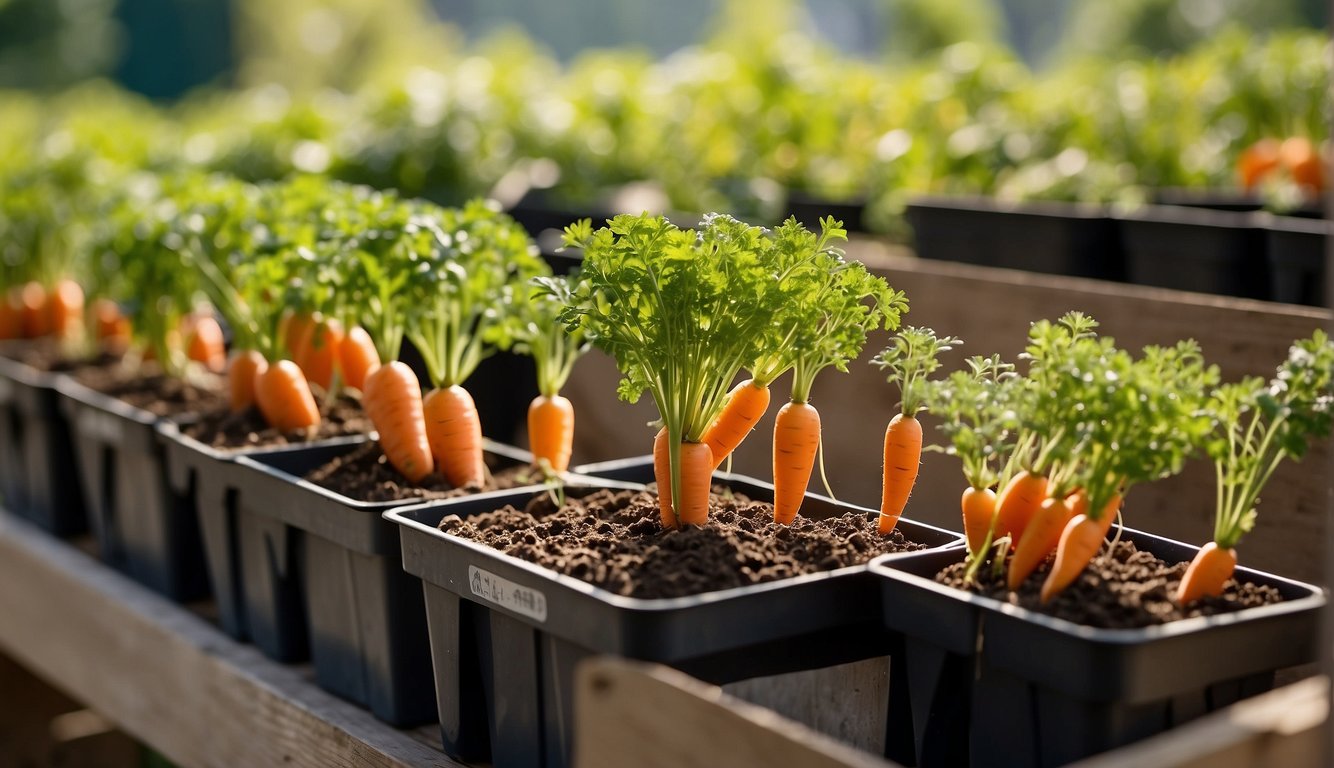
When it comes to growing carrots in containers, selecting the right variety of carrot seed is important. Not all carrot varieties are ideal for container gardening.
In this section, I will discuss the best varieties for containers and how to choose high-quality carrot seeds.
Best Varieties for Containers
The best carrot varieties for container gardening are those that are smaller in size and have a shorter maturity period. Here are some of the best varieties for container gardening:
- Chantenay: This variety is a shorter, stumpier carrot that is perfect for containers. It has a sweet flavor and is easy to grow.
- Parisian: Parisian carrots are small, round and have a sweet flavor. They are perfect for growing in containers and can be harvested early.
- Nantes: Nantes carrots are slender and cylindrical in shape. They are perfect for container gardening and have a sweet flavor.
- Oxheart: This variety of carrot is shorter and wider than other varieties. It has a sweet flavor and is perfect for container gardening.
- Danvers: Danvers carrots are wider at the top and taper down towards the tip. They are perfect for container gardening and have a sweet flavor.
Understanding Seed Quality
When selecting carrot seeds, make sure to choose high-quality seeds that will produce healthy plants. Here are some things to look for when selecting carrot seeds:
- Seed Purity: Look for seeds that are pure and free from other plant species. This will ensure that you get the variety of carrot that you want.
- Seed Germination: Look for seeds that have a high germination rate. This will ensure that most of the seeds you plant will grow into healthy plants.
- Seed Freshness: Look for seeds that are fresh. Older seeds may have a lower germination rate and may not produce healthy plants.
- Hybrid vs. Open-Pollinated Seeds: Hybrid seeds are a cross between two different varieties of plants. They may produce plants with desirable traits, but they may not produce seeds that will grow into the same plant. Open-pollinated seeds are seeds that are produced by a single variety of plant and will grow into the same plant. When selecting carrot seeds, consider whether you want to use hybrid or open-pollinated seeds.
Planting and Spacing – How to Grow Carrots in a Container?
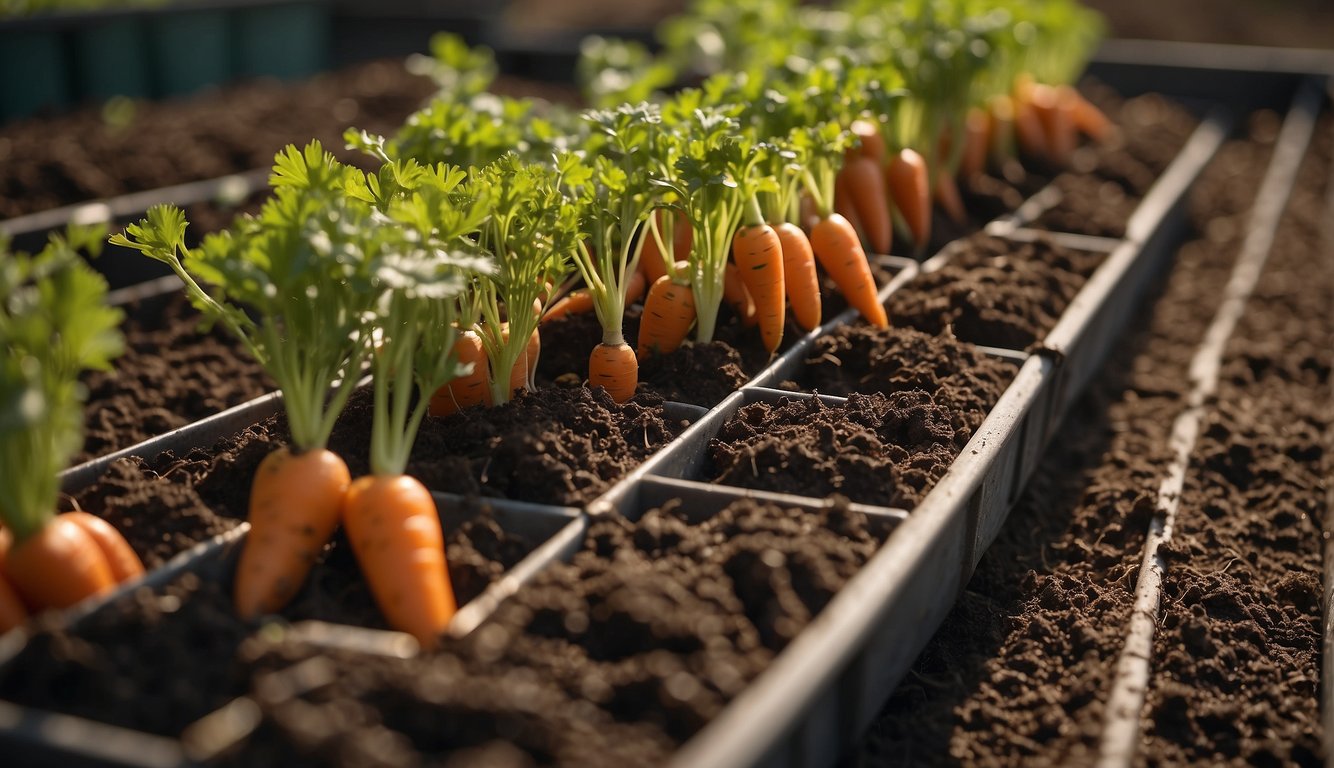
When planting carrots in a container, it’s important to ensure that they have enough space to grow.
Carrots need at least 3 inches of soil depth to grow properly, so make sure to choose a container that is at least 8 inches deep.
Sowing Seeds
Before planting carrot seeds, make small grooves in the soil. To sow the carrot seeds, make parallel slight trenches in the potting soil with the side of your hand where the seed will go. Space the trenches about 2″ apart. Forming these before sowing the seed helps guide your sowing and ensures that the seeds will stay put when watered rather than running off the top of the soil.
Thinning Seedlings
Once the carrot seeds have germinated, thin out the seedlings to give them enough space to grow.
Crowded carrots will not develop properly. Thin the seedlings to about 1-2 inches apart. If you don’t thin them out, the carrots will be small and stunted.
When planting carrots in a container, make sure to keep the soil level consistent. This will help ensure that the carrots grow straight and don’t become misshapen.
Caring for Carrot Plants – How to Grow Carrots in a Container?
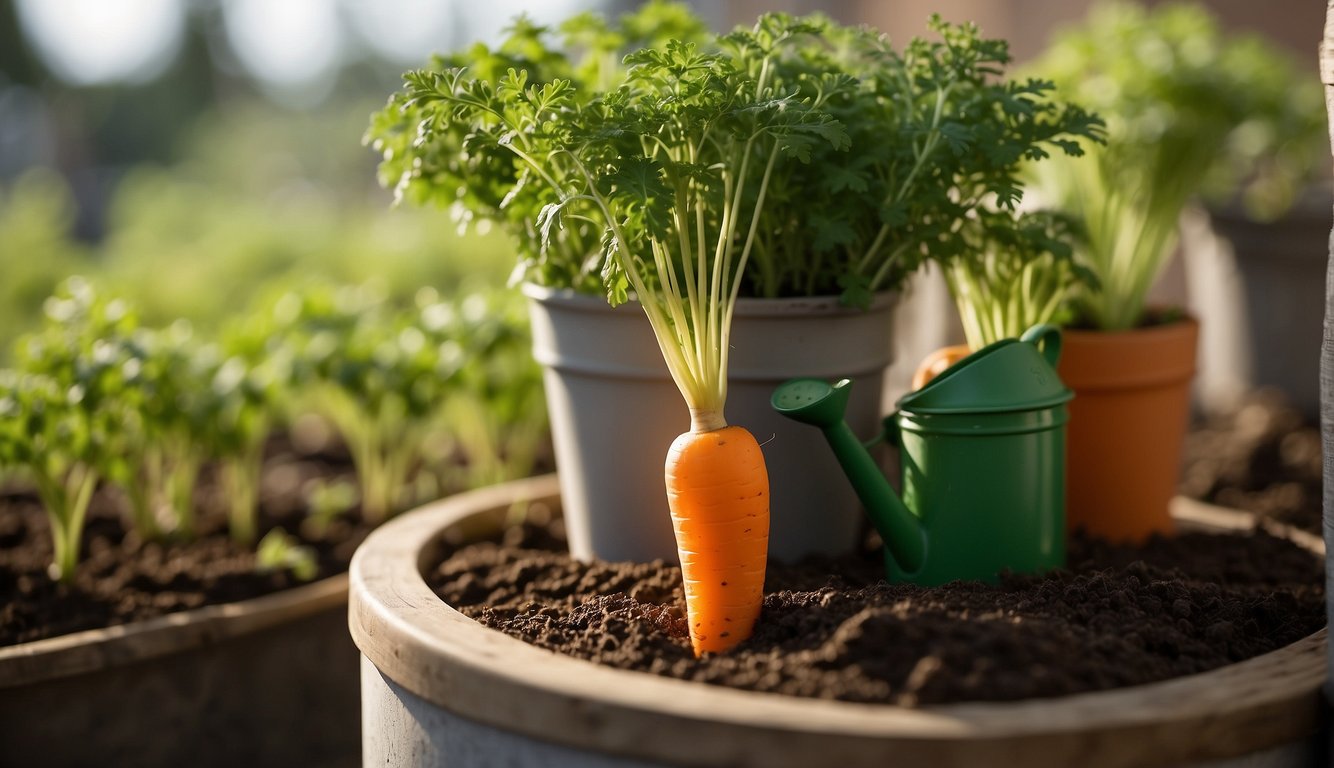
Growing carrots in containers can be a fun and rewarding experience, but it does require some care and attention. Here are some tips for caring for your carrot plants.
Watering Techniques
Carrots need consistent moisture to grow properly, so make sure to water them regularly.
I recommend using a watering can or a drip irrigation system to avoid overwatering.
When watering, make sure to soak the soil deeply, but avoid getting water on the leaves, as this can encourage disease.
Dealing with Pests and Diseases
Carrot plants can be susceptible to a variety of pests and diseases, including aphids, carrot rust flies, and fungal infections.
To prevent these issues, make sure to keep your plants healthy by providing adequate water and nutrients.
You can also use organic pest control methods, such as neem oil or insecticidal soap, to keep pests at bay.
If you notice any signs of disease, such as yellowing leaves or black spots, remove the affected leaves and dispose of them to prevent the spread of the disease.
Mulching and Weed Control
Mulching your carrot plants can help to retain moisture in the soil and prevent weed growth.
I recommend using a layer of straw or shredded leaves around the base of the plants. This will also help to keep the soil cool in hot weather.
To prevent weeds from taking over your container, make sure to remove any weeds as soon as you see them.
You can also use a hoe or hand trowel to loosen the soil around the plants and remove any weeds that have taken root.
Sunlight and Climate Considerations – How to Grow Carrots in a Container?
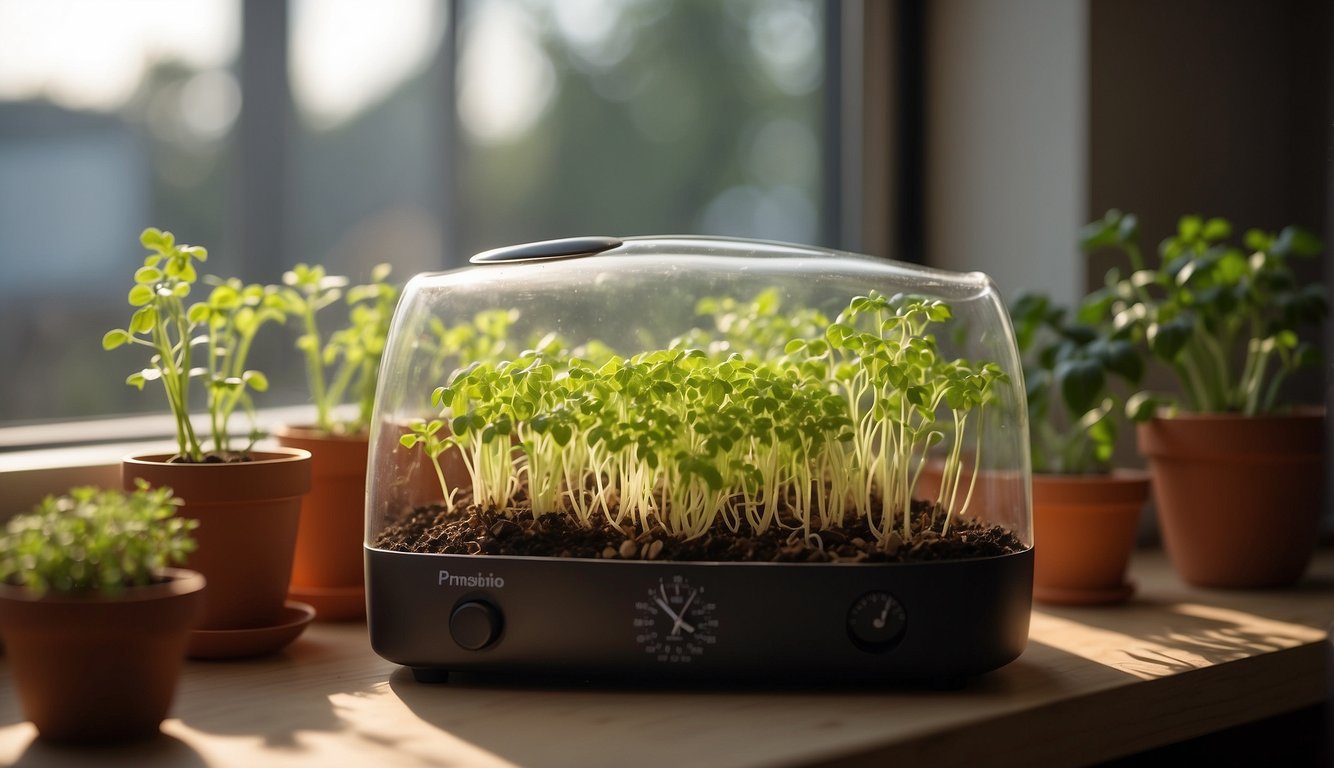
As a container gardener, it is important to consider the amount of sunlight your carrot plants will receive and how they will adapt to weather changes.
In this section, I will cover the amount of sunlight needed for carrot plants and how they can adapt to different weather conditions.
Amount of Sunlight Needed
Carrot plants need full sun to grow properly. This means that they need at least six to eight hours of direct sunlight each day.
If you are growing your carrots indoors, place them near a bright window that gets plenty of sun.
If you are growing them outdoors, make sure to place your container in a spot that gets plenty of sun throughout the day.
Adapting to Weather Changes
Carrots are adaptable plants that can grow in a variety of climates. However, they do best in cooler weather with temperatures ranging from 60 to 65 degrees Fahrenheit.
If you live in a warmer climate, you can still grow carrots in a container by placing your container in a shaded area or by providing shade during the hottest part of the day.
In addition to temperature, carrots are also sensitive to changes in weather. If there is a sudden change in temperature or a heavy rainstorm, your carrot plants may become stressed.
To avoid this, make sure to provide adequate drainage in your container and cover your plants with a cloth or plastic sheet during heavy rainstorms.
Harvesting and Storing Carrots – How to Grow Carrots in a Container?
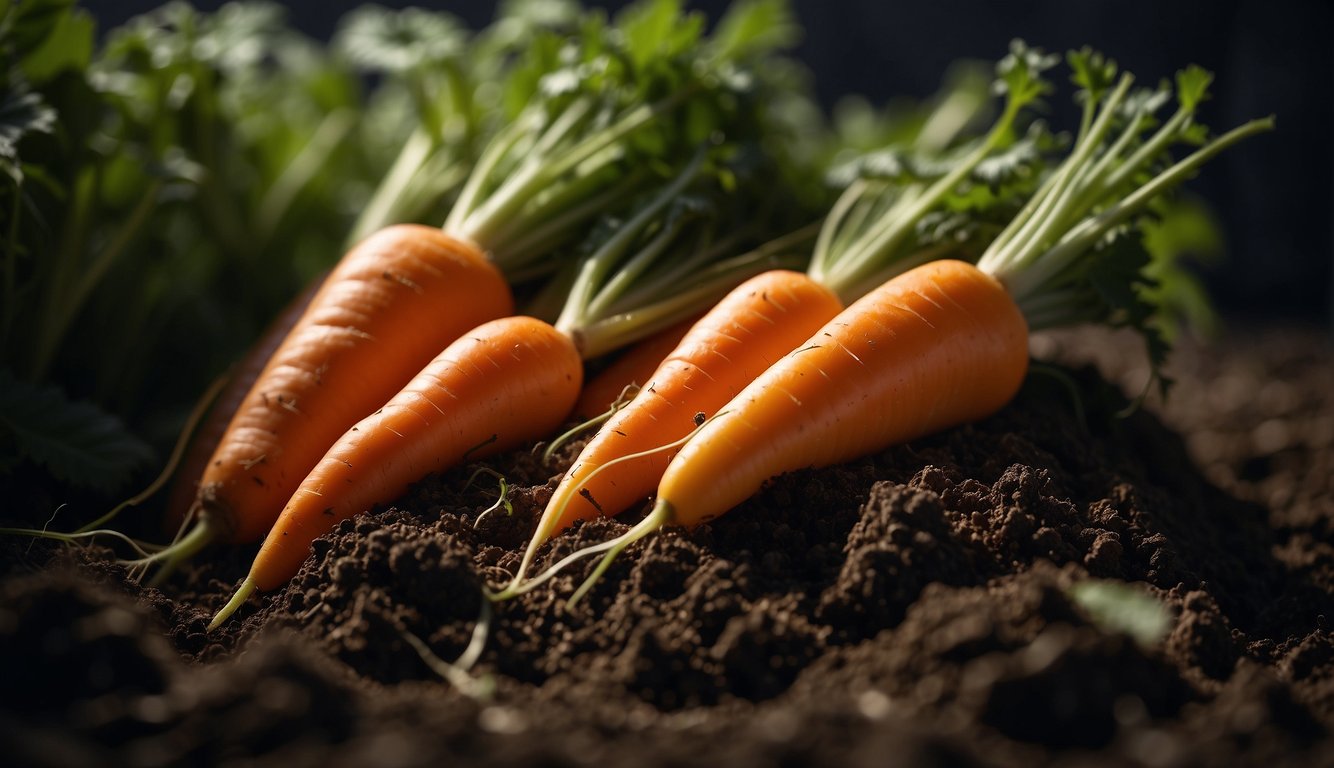
Growing carrots in containers is a rewarding experience, especially when it comes to harvesting them. Here are some tips on how to harvest and store your homegrown carrots.
When and How to Harvest
Carrots are usually ready for harvest in 65 to 75 days after planting. However, the days to maturity may vary depending on the variety you planted.
You can tell if your carrots are ready for harvest by checking the size of the tops. If the tops are about 1 inch in diameter, then the carrots are ready for harvest.
To harvest your carrots, loosen the soil around them with a garden fork or trowel. Be careful not to damage the roots.
Gently pull the carrots out of the soil by their tops. If the tops break off, use a fork to gently lift the carrots out of the soil.
Storing Homegrown Carrots
After harvesting your carrots, it’s important to store them properly to ensure their freshness and flavor. Here are some tips on how to store your homegrown carrots:
- Remove the tops: Cut off the green tops of the carrots, leaving about an inch of stem. The tops can draw moisture from the carrots, making them go bad faster.
- Wash and dry: Wash the carrots under running water to remove any dirt. Pat them dry with a clean towel.
- Choose a storage method: You can store your carrots in the refrigerator, in a root cellar, or in the ground.
- Refrigerator: Place the carrots in a plastic bag or container and store them in the refrigerator. Carrots stored in the refrigerator can last for up to several weeks.
- Root cellar: If you have a root cellar, you can store your carrots there. A root cellar provides a cool and humid environment that is ideal for storing root vegetables. Make sure to store your carrots in a box or crate filled with sand or sawdust to keep them dry.
- In the ground: You can also store your carrots in the ground. If you live in a cold climate, you can cover the carrots with a layer of hay or straw to protect them from frost. Make sure to mark the spot where you buried your carrots so you can find them later.
Troubleshooting Common Issues – How to Grow Carrots in a Container?
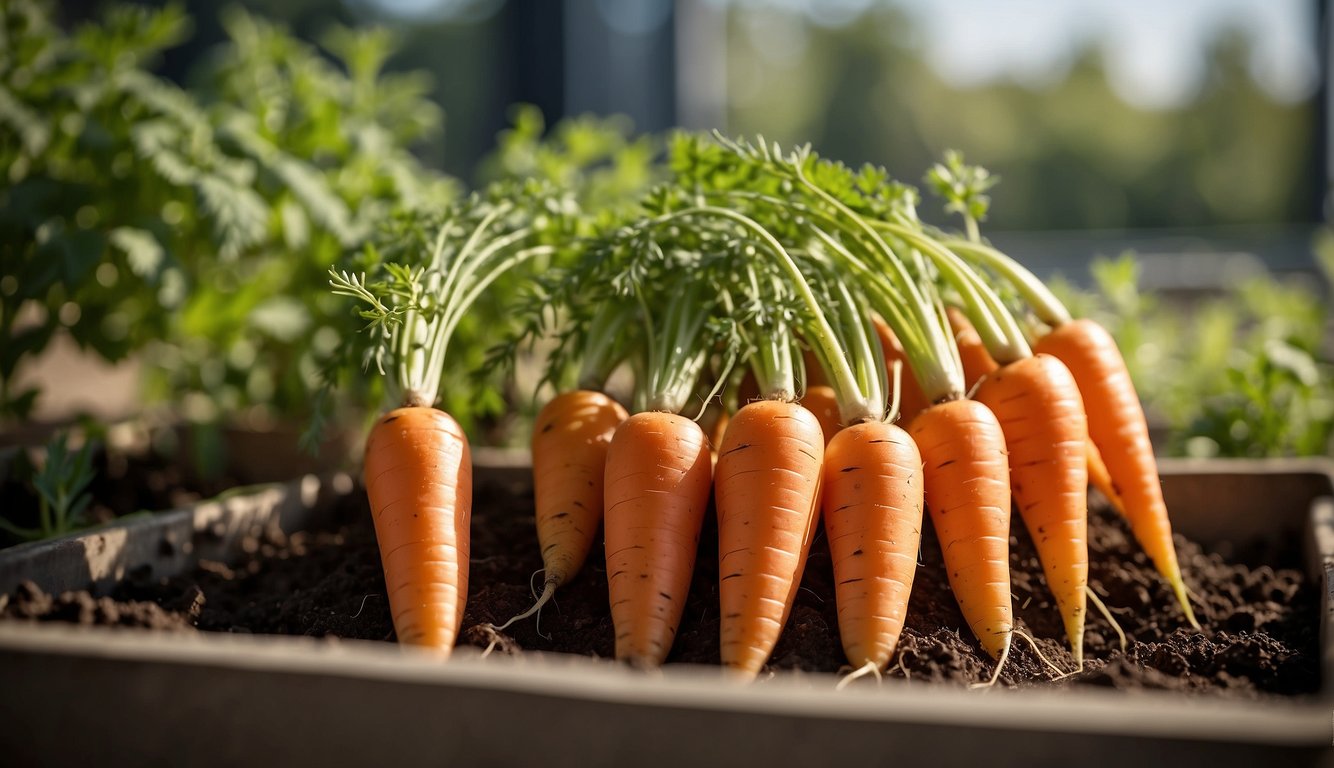
Growing carrots in containers can be a rewarding experience, but it is not without its challenges. Here are some common issues that you may encounter while growing carrots in containers and how to troubleshoot them.
Identifying Root Problems
One of the most common issues that can arise when growing carrots in containers is root problems. If the roots are not growing properly, it can lead to stunted growth, misshapen carrots, and other issues.
To identify root problems, carefully inspect the roots of your carrot plants. Look for any signs of rot or damage.
If the roots are brown, slimy, or have a foul odor, it is likely that they are rotting. In this case, you will need to remove the affected plants and replace the soil in your container.
Another common issue with root growth is overcrowding. If the carrots are too close together, they may not have enough space to grow properly.
To avoid this issue, make sure to space your carrot seeds or seedlings according to the instructions on the seed packet.
Managing Water Issues
Watering is another important factor to consider when growing carrots in containers. Overwatering can lead to root rot, while under-watering can cause the carrots to become dry and tough.
To avoid overwatering, make sure that your container has proper drainage. Use a soilless potting mix that provides good drainage, and make sure that your container has drainage holes at the bottom.
To avoid under-watering, check the soil moisture regularly.
Stick your finger into the soil to a depth of about an inch. If it feels dry, it’s time to water.
Water slowly and thoroughly, making sure that the water reaches the bottom of the container.
Additional Tips for Success – How to Grow Carrots in a Container?

As I mentioned earlier, growing carrots in containers is a great way to enjoy fresh, homegrown carrots even if you don’t have a garden. Here are some additional tips that can help you succeed:
Companion Planting
Companion planting is a great way to improve the health and yield of your carrot plants.
Some good companion plants for carrots include onions, garlic, and chives. These plants can help to repel pests and improve soil quality.
Using Growth Enhancers
If you want to give your carrot plants a boost, you can use growth enhancers like compost tea.
Compost tea is a natural fertilizer that can help to improve soil quality and promote healthy plant growth.
Simply mix compost with water and let it steep for a few days before using it to water your plants.
Container Gardening on Patios and Balconies
If you don’t have a garden, you can still grow carrots in containers on your patio or balcony.
Just make sure to choose a container that is large enough for your plants and has good drainage.
You can also use a trellis or other support to help your plants grow vertically and save space.
Linking How to Grow Carrots in a Container with TheHerbProf
Let’s explore how our How to Grow Carrots in a Container guide and the herbal wisdom at theherbprof.com can work together.
Our How to Grow Carrots in a Container guide is your first step to a successful carrot harvest. But what about the rest of the journey? That’s where theherbprof.com comes in. It’s your herbal encyclopedia, including carrot care!
Picture this. You’ve followed our How to Grow Carrots in a Container guide and your carrots are thriving. But you’re unsure about pest control or when to harvest. No problem! Theherbprof.com has all the answers. It offers a wealth of information on how to care for your carrot plants.
And there’s more! Theherbprof.com also shares the health benefits of carrots. So, while you’re enjoying the fruits of your labor, you’re also learning about their nutritional value.
So, let’s get growing with our How to Grow Carrots in a Container guide and let theherbprof.com guide us on this carrot-growing journey.
References – How to Grow Carrots in a Container?
Little Herb Encyclopedia, by Jack Ritchason; N.D., Woodland Publishing Incorporated, 1995
The Ultimate Healing System, Course Manual, Copyright 1985, Don Lepore
Planetary Herbology, Michael Tierra, C.A., N.D., Lotus Press, 1988
Handbook of Medicinal Herbs, by James A. Duke, Pub. CRP Second Edition 2007
The Complete Medicinal Herbal, by Penelope Ody, Published by Dorling Kindersley
Check the Following Articles!
Arugula Growing: Tips for a Successful Harvest
How to Transplant Aloe Vera? Step-by-Step Guide
Pruning Tomatillo Plants: A Guide for Optimal Growth
Storage Apples: How to Keep Them Fresh for Longer
Frequently Asked Questions – How to Grow Carrots in a Container?
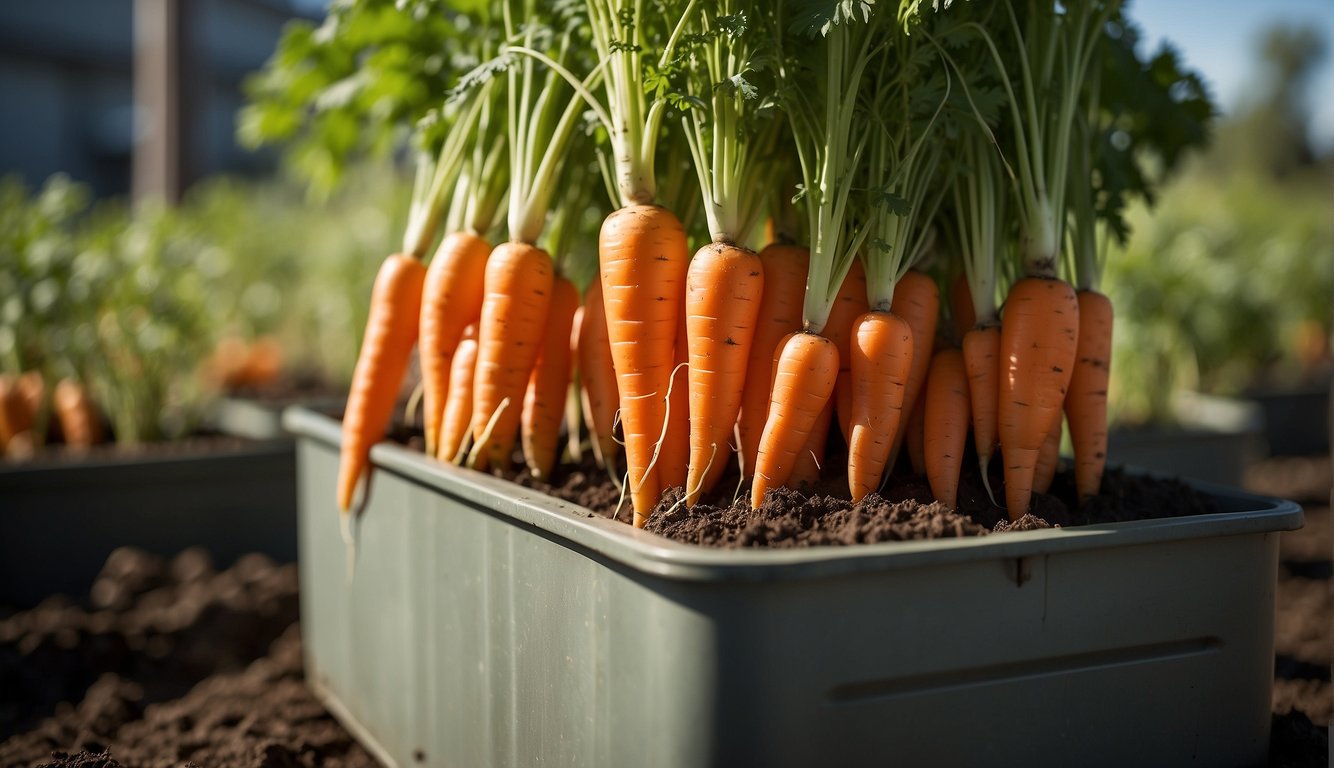
What type of soil is best for growing carrots in containers?
The best soil for growing carrots in containers should be loose, well-draining, and rich in organic matter.
A mixture of peat moss, vermiculite, and compost is ideal. Avoid using soil that is heavy or compacted, as this can hinder root growth and lead to stunted carrots.
Can you grow carrots indoors using containers, and if so, how?
Yes, you can grow carrots indoors using containers.
Choose a sunny windowsill or use grow lights to provide sufficient light.
Use a container that is at least 12 inches deep and fill it with well-draining soil.
Follow the same steps as growing carrots outdoors, but be sure to monitor the temperature and humidity levels, as indoor environments can be drier.
What are the steps to grow carrots from carrot tops in containers?
Growing carrots from carrot tops is a fun and easy project.
Cut off the top inch of a carrot, leaving a small amount of the vegetable intact.
Place the top in a shallow dish of water, cut side down, and change the water every few days.
Once the top has sprouted roots, plant it in a container filled with well-draining soil and continue to care for it as you would a regular carrot plant.
How deep should a container be for optimal carrot growth?
A container for growing carrots should be at least 12 inches deep to provide enough space for the roots to grow.
If you are growing longer varieties of carrots, such as Nantes or Imperator, choose a deeper container.
Keep in mind that the width of the container is also important, as it will determine how many carrots you can grow in a single container.
What are the watering requirements for carrots grown in pots?
Carrots grown in containers require consistent moisture to prevent the soil from drying out.
Water the plants deeply once or twice a week, depending on the weather conditions.
Be sure to water the soil, not the foliage, to prevent disease.
Monitor the soil moisture levels regularly and adjust your watering schedule as needed.
Are Chantenay carrots suitable for container gardening, and how can they be cultivated?
Chantenay carrots are a great choice for container gardening because they are short and stocky, making them ideal for smaller containers. They also have a high yield and a sweet, crisp flavor.
To cultivate Chantenay carrots, choose a container that is at least 8 inches deep and fill it with well-draining soil. Plant the seeds 1/4 inch deep and keep the soil moist until the seeds germinate.
Thin the seedlings to 2-3 inches apart once they are a few inches tall, and continue to care for the plants as you would regular carrots.
